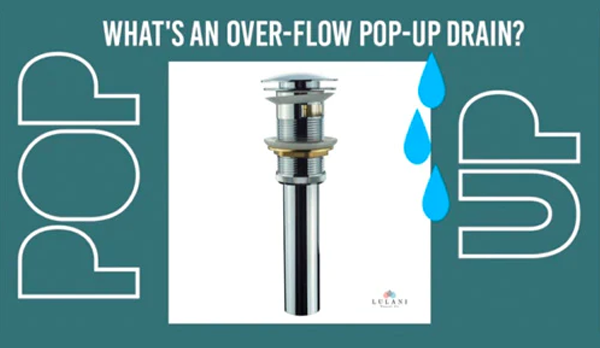Your Cart is Empty
At Lulani, we supply pop-up overflow drains with all our bathroom taps, excluding those intended for vessel sinks. As the name suggests, over-flows help prevent your sink from overflowing. An overflow is a tiny gap in the sink that allows air to enter the drain when the sink is filled with water, helping it drain faster.
Check if your bathroom sink has an overflow before selecting a drain to ensure you choose the correct type.
What the overflow drain does:

Vessel sinks:
Vessel sinks are unique in that they usually don’t have an overflow drain. For this reason, they tend to drain slower and result in bubbles coming from the drain when water is draining down the sink. Conventional undermounted sinks typically come with an over-flow drain.
If you have a vessel sink positioned above the countertop, as opposed to a recessed sink that is partially inside the cabinet, choose a drain with a mounting ring. The mounting ring supports the sink, which is important, since the sink isn’t being supported all the way around by a cabinet.
Types of drains:
1. Pop-up (or press and seal): These drains are very easy to operate and install. The pop-up mechanism is activated by simply pressing down on the drain cover.

2. Twist and turn: These drains feature a small nob that is used to manually lift the drain cover. Like pop-up drains, these drains are very easy to install and do not feature any beneath the counter mechanisms. They are closed by pressing the drain cover down and turning, or “twisting”, to hold in place.

3.Pop-up with lift rod: Drains with pop-up rods feature stoppers and lift rods that are activated by pulling up on the lift rod located at the back of the faucet. The lift rod is attached to the drain underneath the sink and will lift and close the drain cover.



Comments will be approved before showing up.
